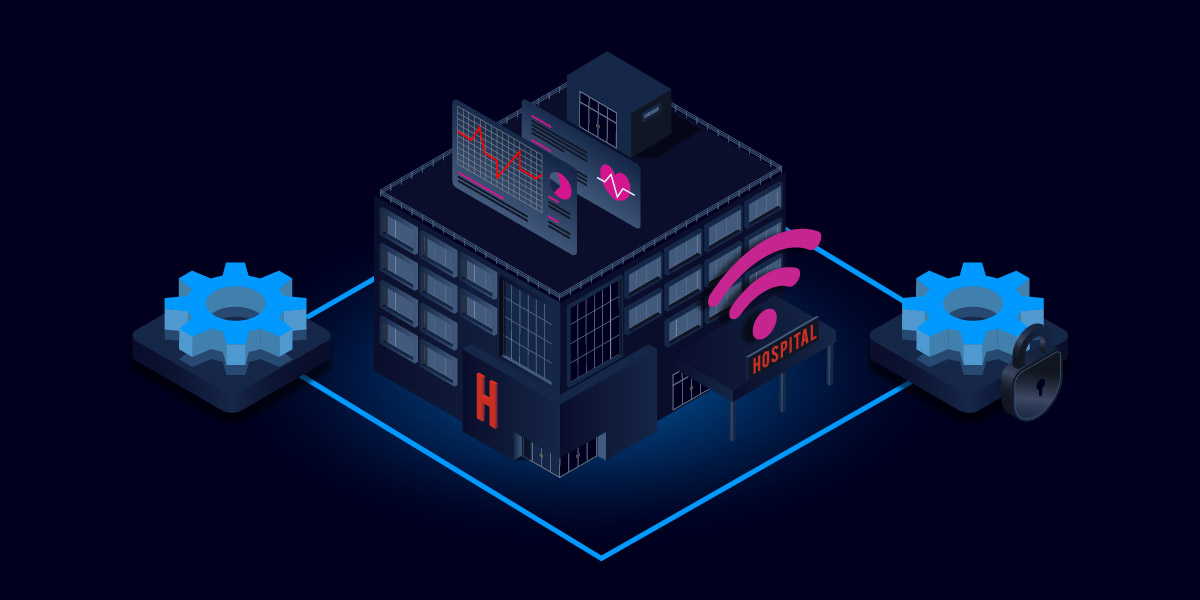Managing the IT infrastructure of a major healthcare system like Rush University Medical Center is no small feat. With three hospitals and over 30 remote sites, RUSH’s network is a lifeline for patients and staff, supporting everything from patient monitoring devices to medical records — all while meeting strict security and regulatory standards. In a hospital setting, every second counts — especially when the network is involved.
In healthcare, even the smallest network hiccup can have a profound impact on patient care. The challenge for RUSH wasn’t just managing this complex network, but doing so efficiently, with zero margin for error.
Turning to Network Automation to Save Time & Improve Care
What began as an effort to automate repetitive tasks — like IP reservations and port configurations — quickly grew into an initiative to modernize and orchestrate their entire IT infrastructure.
In our latest episode of the Network Automation Nerds Podcast from Packet Pushers, Uzair Khan, Manager of Network Services at RUSH Medical, joins Eric Chou and Ethan Banks to share the journey of transforming network operations through automation and orchestration.
Overcoming Challenges on the Path to Automation
The stakes for networking in healthcare are incredibly high — network reliability and service speed directly impact patient outcomes. For Uzair Khan and his team, automation was essential, not only to streamline operations but to empower better care.
However, introducing automation was not without hurdles. Initially, they faced significant challenges in writing scripts and balancing automation tasks with their roles as network engineers. This was especially difficult because many automation solutions require both programming and networking expertise, which was overwhelming at first.
Beyond the steep learning curve, the available tools were “point solutions”—focused on specific areas like firewall configurations or security tasks. These tools provided value, but they lacked the scope needed for orchestrating workflows across Rush’s complex healthcare network.
The biggest challenge with many automation tools is that they’re built for specific technology stacks. What we needed was something that could orchestrate across different systems and technologies.
Breaking the Complexity Barrier with Itential
To drive efficiency across their infrastructure, RUSH needed a platform that could connect all their systems, unify processes, and enable orchestration. That’s where Itential came in — offering the ability to integrate across technologies and build orchestrated workflows.
The game-changer for us with Itential is how it abstracts the complexity of automation. In the past, scripting and automation were intimidating because they required you to be a programmer first and a network engineer second. But with Itential, you don’t need to be a developer to create impactful automations.
By providing low code building blocks and workflows, Itential made it easy for Khan’s team to implement automation without getting bogged down in scripts. What began as small wins—like automating IP reservations—soon evolved into full-scale workflows that manage devices impacting patient care.
The real value came when we started combining those small tasks into larger workflows. Now, we’re solving bigger problems, like managing devices that impact patient care in real time, and Itential is central to making that happen.
Shifting from Automation to Orchestration
As automation efforts at RUSH scaled, it became clear that simple task automation wasn’t enough. The team needed orchestration—the ability to coordinate workflows across multiple systems and departments.
That’s when they adopted Itential’s platform, which allowed them to create workflows that integrate everything from network security to device management.
What really stood out to me about Itential is not just the automation piece, but the orchestration capabilities. We evaluated a lot of tools that focused on specific areas, like network security or firewall automation, but Itential was different. It brought everything together. We’re able to tie multiple systems into a single workflow, and that’s a big deal for a healthcare system.
Results: Better Patient Outcomes, Faster Operations, and Empowered Engineers
The real-world impact of network automation at RUSH is significant. From automating routine tasks like IP reservations to focusing on strategic initiatives, automation has allowed the IT team to drive better outcomes for both patients and staff.
For us, Itential isn’t just about faster operations; it’s about empowering our team to focus on what matters most. Our engineers are no longer stuck with mundane tasks like IP reservations or port configurations. Instead, they can focus on solving complex challenges, innovating, and improving patient care.
The benefits extend beyond operational efficiency—automation has improved the quality of life for engineers by reducing the burden of repetitive tasks. At the same time, it has increased the speed and reliability of patient care.
What’s Next for RUSH Medical?
The benefits extend beyond operational efficiency—automation has improved the quality of life for engineers by reducing the burden of repetitive tasks. At the same time, it has increased the speed and reliability of patient care.
In healthcare, where time and accuracy are crucial, the future of network automation looks bright. RUSH University Medical Center is a prime example of how automation can drive both technological innovation and better patient care by empowering teams to do meaningful work, keep up with scale, and make the most of their evolving network and IT infrastructure.
Tune in to the full podcast episode to hear more about Rush’s network automation journey.





